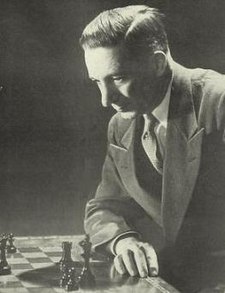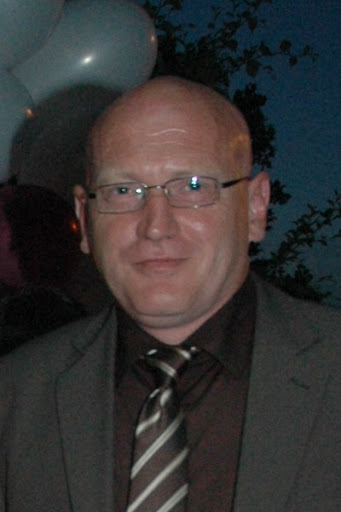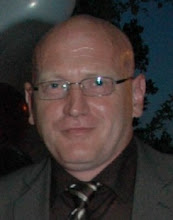More about me ...
... even born in 1962, my live has started in 1998 … no further reasoning on this now (because I’m trying to keep it short at this time!).
Just to let you know, in winter 1994 I’ve first learned about Information Technology at the University of Potsdam and since that time I’m addicted to Information Technology. I’ve continued learning all important about IT Development in 1995 at the Canton of Geneva (where I first met Pierre Hafner!) and continued the educational part of my knowledge (in 1996) at the Canton of Neuenburg (Switzerland). After leaving Switzerland in 1998 and moving (across Amsterdam) to Paris, I was working as an IT Professional for the company “Monde sans Frontiers” (MSF) in Paris.
I’ve returned to Germany in autumn 1998, where I’ve worked as an independent consultant for some small-business inventors and, by hazard, came in touch with a guy named Dr. Alex Sefke (in 1998 still Alex Sefke GmbH Hamburg) who used to be a Principal Consultant at GE Capital IT Solutions Europe. He gave me the chance to join a GE Capital ITS Assessment Center where I was elected with two other participants of about thirty.
After having succeeded two service projects (at Mannesmann Demag Germany and at GE Medical Systems France) for the Hamburg Unit of GE Capital ITS, GE offered me a full time employment.
Being a full time employee at GE Capital ITS I fist took care of Managed Services Projects (Clients: Gruner+Jahr, Tchibo, Baiersdorf AG and many more German Top 100 Industry Clients). My mission was mainly the recovery of already lost development projects. Besides, this being part of my nature, I was developing self-invented system integration solutions for GE and GE’s clients.
Almost in all projects at least meeting (but mostly breaking) the points I’ve ended up being “Manager Processes, Germany” for the Support Services Unit. In that position I’ve reported to the General Manager who (he himself reporting to the CEO) was member of the “Extended European Board”, whilst I, having had a lot of education in ITIL and Six Sigma processes at GE (having a Six Sigma Green Belt), was announced member of the “GE Capital European Leadership Council” in early 2002.
In that position I’ve successfully automated different Support Service Processes to reduce service cost by reducing 450 man-days for a whole year to 125.
In mid-2002 my manager and I ended up in some kind of “discussions” where he would support “People of the Board” but I was concerned about GE’s “Basic Interests” (the so called “steak-holders”) -> looking back on that situation now, I must admit that I was hopelessly “burned-out” at that time!
I’ve left not only GE but also my family in summer 2002 and bought 50% of a Spanish company being Managing Director of an “Internet-Café” … planning to build a chain of internet cafes in Spain (CiberNet C.B.). Because of a reunion with my wife and my kids I’ve sold my shares and returned to Germany … since then I’m doing consulting jobs and am building up content web sites (currently 51 domains and more than 100 sub domains) using Microsoft Technologies (Microsoft .NET and SQL Server environment on a secured [ISA Server] private network and on a Windows 2003 Web Server as presentation interface).
Besides I’m working on Open Source Projects (being a founder of two self-invented projects at www.SourceForge.Net) and if I ever have some minutes of spare time I’m helping other developers (on all kind of technologies) to improve -> you’ll find my profile at http://www.experts-exchange.com/M_786061.html ...
... surely to be precised & continued!
Sunday, October 19, 2008
Raisor's life as a part of Information Technology
Wednesday, October 15, 2008
Hej žigani braco moja
Noćas ocu da se napijem, u kafani sve da razbijem, to jedino mogu njima, da se zalim žiganima, jer žigani đusu imaju.
To jedino mogu njima, da se zalim žiganima, jer žigani đusu imaju.
Hej žigani ocu pesme da vas zove niko ne sme, dok ja svoju ljubav zalim, hej žigani braco moja nije ona bilo koja da je lako zaboravim.
Nije dala njena rodbina, da mi bude bolja sudbina, to jedino mogu njima, da se zalim žiganima, jer žigani đusu imaju.
To jedino mogu njima, da se zalim žiganima, jer žigani đusu imaju.
Hej žigani ocu pesme da vas zove niko ne sme, dok ja svoju ljubav zalim, hej žigani braco moja nije ona bilo koja da je lako zaboravim.
Ja sam hteo da je ukradem, il da umrem il da propadnem, to jedino mogu njima, da se zalim žiganima, jer žigani đusu imaju.
To jedino mogu njima, da se zalim žiganima, jer žigani đusu imaju.
Hej žigani ocu pesme da vas zove niko ne sme, dok ja svoju ljubav zalim, hej žigani braco moja nije ona bilo koja da je lako zaboravim.
by Ljuba Alicic
Sunday, September 28, 2008
How to Convert C# Code to VB.NET
Today I'd just like to introduce you to the most important website for VB.NET developers. |
Thursday, September 25, 2008
Seven Month in Potsdam [Germany]
|
Tuesday, September 23, 2008
Is it true that the winning team players are all team players?
That question was asked in the Dropping Knowledge Group at XING. My answer was that when I was tought to be a project manager, our supervisor built up certain scenarios ... we were all taken beside and we were each given a task to fulfill ... each of the participants was given a special duty on that "virtual project" and we were all confronted with each other ... no matter, the strongest had some kind of success ... but my feeling was that the team's final goal had not been served to at all ... |
Monday, September 22, 2008
Chess and Checkers : the Way to Mastership
From time to time I'll introduce the books I like. Today I'd like to start with a book about chess by Edward Lasker. this book can be read online as a free eBook at The Gutenberg Project or even be bought at Amazon.
|
Sunday, September 21, 2008
Six Years in Ingelheim am Rhein [Germany]
From January 2002 to January 2008 I was living in Ingelheim am Rhein. Before I chat a little more about that city, I'd like to introduce you to its history, found at Wikipedia. Some stories and a lot of images from Ingelheim am Rhein will certainly follow! The History of Ingelheim am Rhein
|
Saturday, September 20, 2008
Six Weeks In Saraorci [Serbia]
Saraorci, my new love!
The history of Smederevo
|
Friday, September 19, 2008
My Vision, My Mission, My Methods
|
 From July 1994 to January 1995 I was living in Potsdam. I'll certainly write more about the time I've spent in Potsdam and surely I'll write about the time I've spent at the Potsdam University (see on the right picture).
From July 1994 to January 1995 I was living in Potsdam. I'll certainly write more about the time I've spent in Potsdam and surely I'll write about the time I've spent at the Potsdam University (see on the right picture). The present world war has given great impetus to the game of Chess. In the prison camps, in the field hospitals, in the training camps and even in the trenches Chess has become a favorite occupation in hours of leisure, not only because it offers a most fascinating pastime, but mainly because it serves beyond any doubt to develop what is now the most interesting study for every soldier -- the grasp of the principles underlying military strategy and the ability to conceive and to carry out military operations on a large scale.
The present world war has given great impetus to the game of Chess. In the prison camps, in the field hospitals, in the training camps and even in the trenches Chess has become a favorite occupation in hours of leisure, not only because it offers a most fascinating pastime, but mainly because it serves beyond any doubt to develop what is now the most interesting study for every soldier -- the grasp of the principles underlying military strategy and the ability to conceive and to carry out military operations on a large scale. The town was settled well before Roman times and reached its greatest importance during the reign of Charlemagne who built a palace there. His son Louis the Pious used the palace frequently and died on an island in the Rhine close by. Several diets of the Holy Roman Empire, as it was known later, were held in Ingelheim by Charlemagne and his successors. Parts of the palace have been excavated and can be viewed. In later medieval times the significance of the palace declined but was briefly revived by Emperor Frederick Barbarossa, who greatly admired Charlemagne. An important regional court was located in the town of Ober-Ingelheim throughout the Late Middle Ages and early modern times.
The town was settled well before Roman times and reached its greatest importance during the reign of Charlemagne who built a palace there. His son Louis the Pious used the palace frequently and died on an island in the Rhine close by. Several diets of the Holy Roman Empire, as it was known later, were held in Ingelheim by Charlemagne and his successors. Parts of the palace have been excavated and can be viewed. In later medieval times the significance of the palace declined but was briefly revived by Emperor Frederick Barbarossa, who greatly admired Charlemagne. An important regional court was located in the town of Ober-Ingelheim throughout the Late Middle Ages and early modern times. From July 2008 to August 2008 I've spent about six weeks in a small Serbian village called "Saraorci". My wife owns a house there so it was kind of easy living. I fell deeply in love with that village as with others I've visited too. The largest city in the near of Saraorci is Smederevo ... so I just collected some facts at
From July 2008 to August 2008 I've spent about six weeks in a small Serbian village called "Saraorci". My wife owns a house there so it was kind of easy living. I fell deeply in love with that village as with others I've visited too. The largest city in the near of Saraorci is Smederevo ... so I just collected some facts at  The modern founder of the city was the Serbian prince Đurađ Branković in the 15th century, who built the Smederevo Fortress in 1430 as new Serbian capital. When he became lord of Tokaj in Hungary, he planted vines from Smederevo on his estates there; from these came the famous Tokaji white wine. Smederevo was the residence of Branković and the capital of Serbia from 1430 until 1439, when it was conquered by the Ottoman Empire after a two months siege.
The modern founder of the city was the Serbian prince Đurađ Branković in the 15th century, who built the Smederevo Fortress in 1430 as new Serbian capital. When he became lord of Tokaj in Hungary, he planted vines from Smederevo on his estates there; from these came the famous Tokaji white wine. Smederevo was the residence of Branković and the capital of Serbia from 1430 until 1439, when it was conquered by the Ottoman Empire after a two months siege. My Mission
My Mission




